Western Bluebird At Grand Canyon National Park
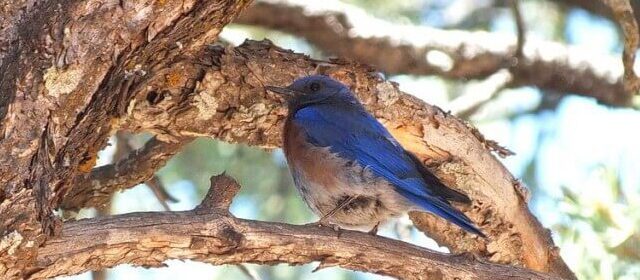
After an hour-long guided hike known as a Fossil Walk at Grand Canyon National Park, Bob and I were returning to Maswik Lodge for lunch by way of the forested area adjacent to Village Loop Drive and the railway track. A brilliant blue flash of colour had us both looking up into one of the pine trees where sat perched a male Western Bluebird (Sialia mexicana).
We were really impressed by the grandeur of the Ponderosa Pines (Pinus ponderosa) scattered amongst the village in Grand Canyon National Park, but it was the distinctive bark of the trees that was so different from those pine trees seen here in Canada.
The trademark cinnamon-red bark and accompanying black crevices had a distinctly scaly, plate-like appearance. It is the bark, in combination with the soaring height that makes the trees stand out as very stately specimens of the coniferous evergreen species of trees.
The preferred habitat of Western Bluebirds is in evergreen and deciduous woods, particularly where Ponderosa Pine is well established, but they also inhabit pinyon pine and juniper mixed forests, which are also prevalent in the area of the Grand Canyon.
Western Bluebird males have brilliant blue uppers and orange breasts and sides, which sets them apart from the male Mountain Bluebirds, whose plumage is an all-over, more uniform shade of turquoise blue.
As Bob and I made our way between the pines towards the main building of Maswik Lodge, the bluebird flitted from tree to tree. Sometimes, it was easy to keep the bird in our sights…
but other times, we lost track of him until we espied his well-camouflaged body in the shadows next to the similarly coloured tree bark.
Western Bluebirds rely on trees for hunting perches as they traditionally will drop from a low perch to catch insects on the ground. This bluebird seemed to stick to the low branches of the pine tree, but he was still pretty high up. The bottom half of a Ponderosa Pine’s trunk has no branches, and the trees can achieve a height of between 30-50 metres tall.
Seeing as Western Bluebirds eat small creepy crawlies like grasshoppers, ants, beetles and wasps, they must have a very keen eye and quick reflexes to snatch one up when setting off from such a distant perch. Bob and I thought it best to leave the bird to his foraging, while we, ourselves, headed off to the cafeteria at the behest of our own grumbling stomachs.
Frame To Frame – Bob and Jean




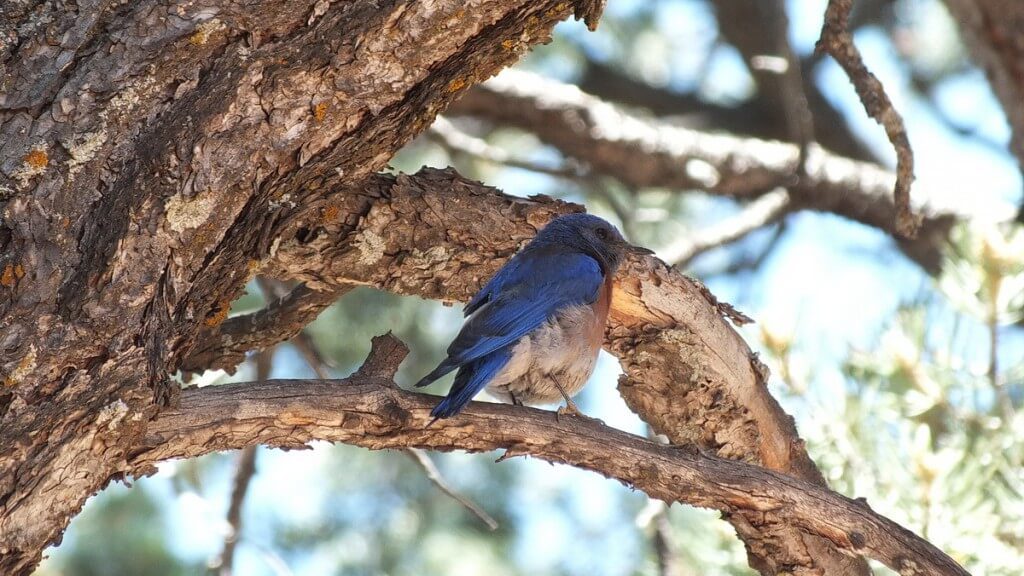
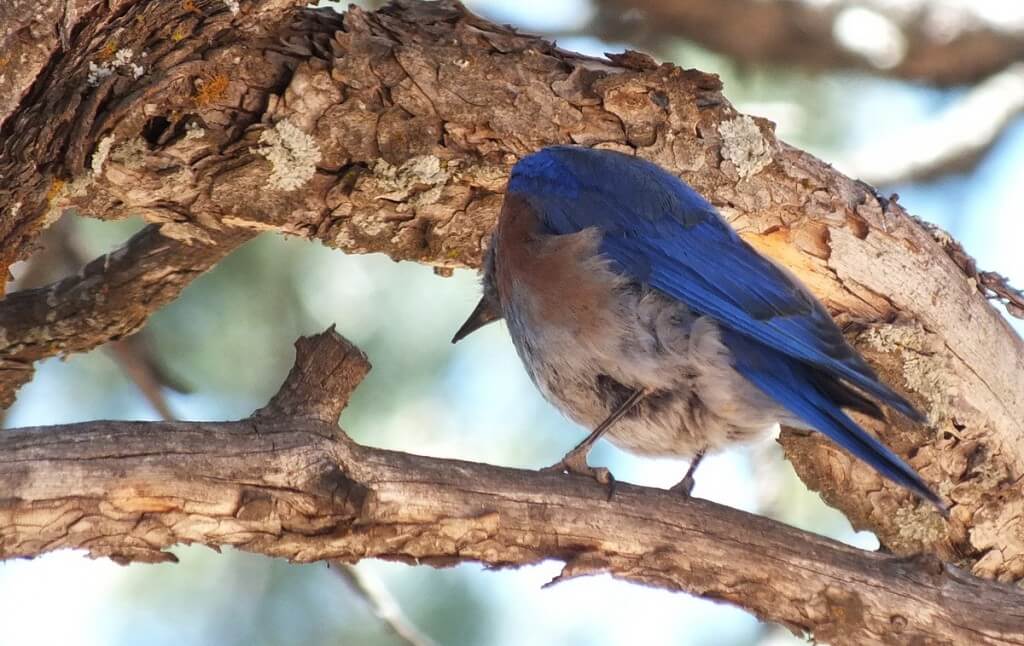
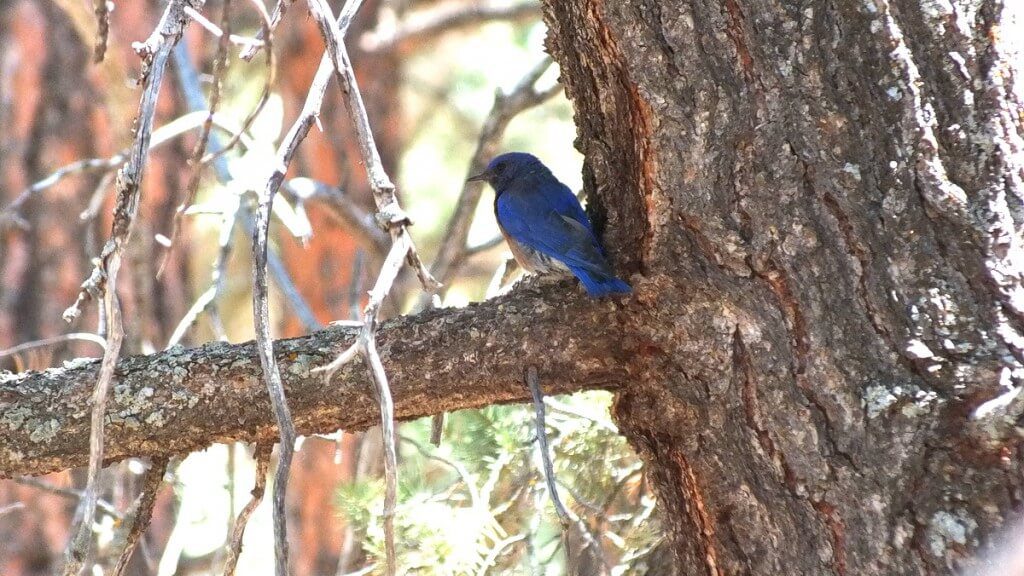
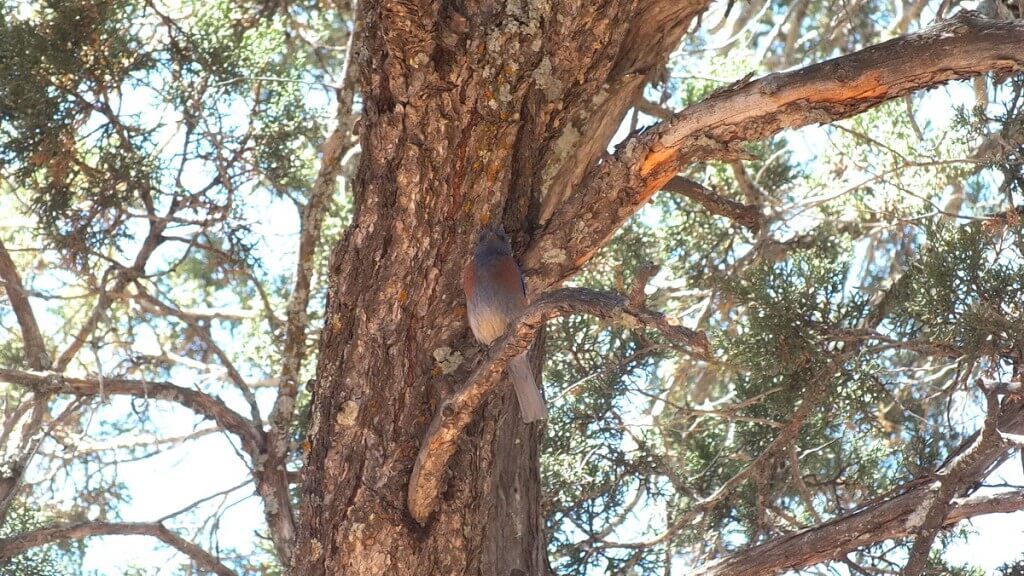
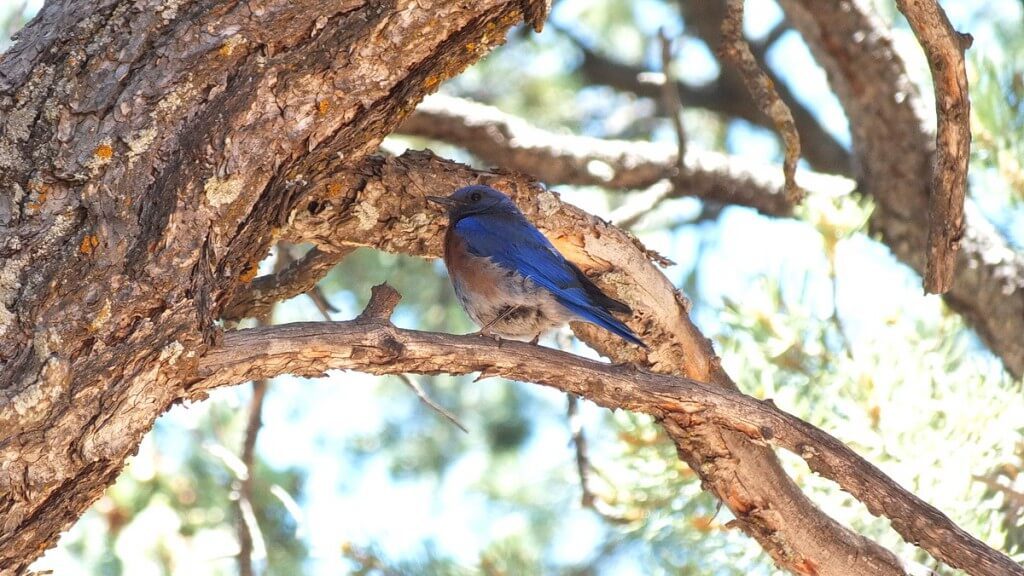
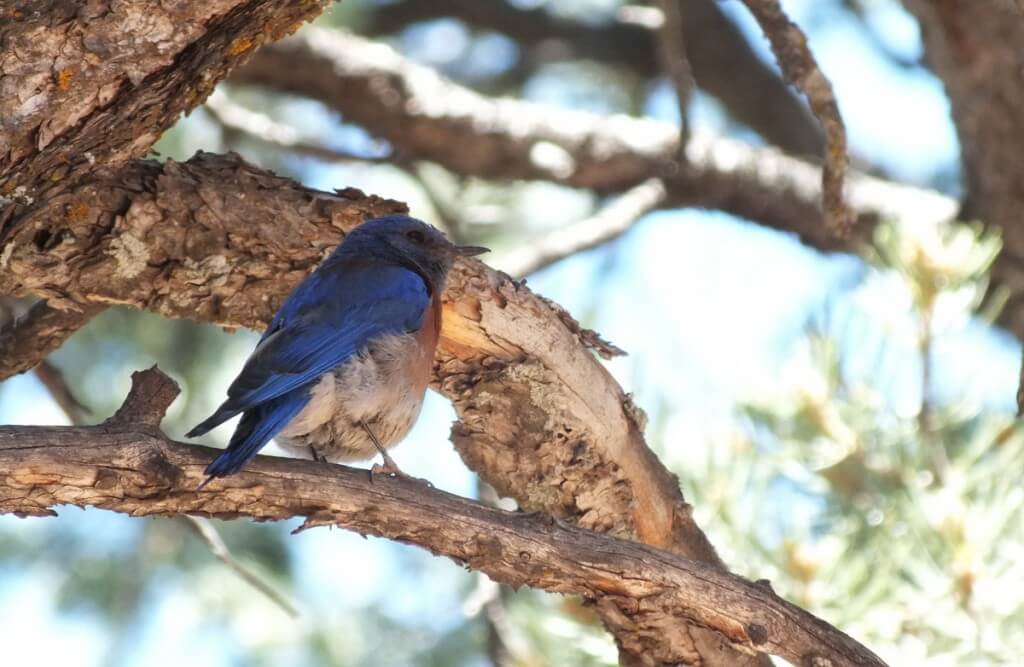
Unique geography and beautiful captures of the Western Bluebird.
Thanks, Daniel. We were pleased with our photographs, for the most part. If we visit again, I think we would aim to go a little earlier in the season when the temperatures are cooler and the spring flowers and bushes are in bloom. There would likely be a lot of bird activity then, too.
Beautiful bird indeed. Looks like a great trip you had.
http://paul-otoole.pixels.com/
We really enjoyed our trip and look forward to going back again sometime. There is a lot to see in that area of the United States.